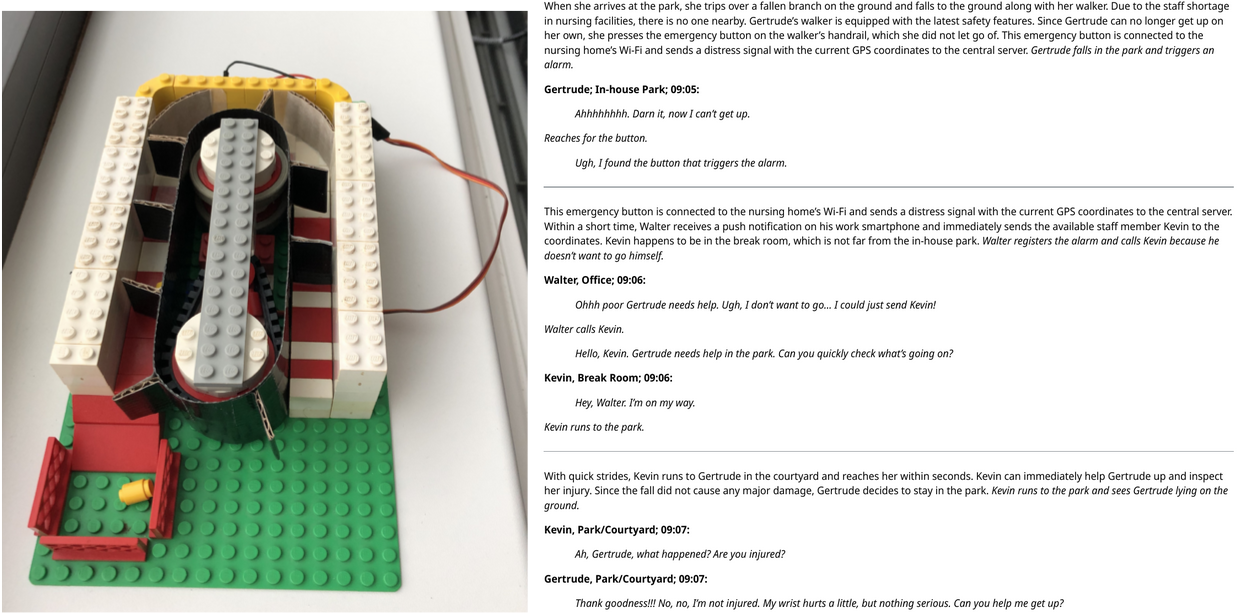Story of an Austrian Bachelor Student and the Smart Nursing Home
Toby was a computer science student at the end of his bachelor program in mobile computing when he decided to enroll in the IoT course at FH OÖ in Austria Linz. He had some prior experience with soldering, electronics, and programming, and he approached the class with an open mind. Working with microcontrollers, sensors, and the Raspberry Pi sounded exciting to him.
The first class turned out to be slightly confusing for Toby. There were no traditional lectures, and the lecturer explained complex class setups in a different style. The class followed a portfolio-based approach, similar to school, and utilized a flipped classroom model. Toby wondered what to expect. Soon, hands-on tasks were assigned, accompanied by extensive documentation requirements. Additionally, the class structure was unique, with an intensive block of 72 hours of instruction spread over four weeks, including unsupervised sessions.
Despite the initial confusion, there was a lot of exploration and room for trial and error. Toby was fortunate to have a study buddy named Arti, with whom he could work on the tasks. The other classmates were also helpful, sharing information on the internal classroom chat, allowing everyone to progress quickly.
The class delved into IoT concepts and communication fundamentals, with constant research and exchange of ideas among the students. The teacher provided guidance, emphasizing the importance of documenting everything in the "portfolio" using version control. Surprisingly, the students found portfolio-based assessment and using markdown in GitHub repositories for documentation to be much more manageable than anticipated. Collaborative work on the portfolio's lab section was done with Toby's teammates, enabling students to improve their documentation and version control skills, which are essential in the tech industry.
In the first week, Toby had the opportunity to build their first networked system—a remote-controlled LED light controlled by a button via WiFi. It was challenging, but eventually, they figured it out. Time seemed to fly by during the eight-hour session, and Toby felt a sense of accomplishment, realizing how much they had achieved and how they were able to assist their classmates. The course continued in a similar fashion, with small video lectures, discussions, and guest lectures from industry professionals. They tackled various challenges, such as building a simple access control system and developing creative solutions for measuring different liquids for a sailboat project.
Every project in the course was intertwined with storytelling as a developmental tool. For the final project, Toby and Arti teamed up with another group. Toby had an early realization, connecting to his own grandma, who resided in an elderly care home and recently had a fall (thankfully without serious injury but still a scary incident). He began to imagine how technology could improve the lives of elderly people in care facilities, making their lives easier and safer. Thus, Toby and Arti embarked on developing the case of the "Smart Nursing Home" and successfully convinced another pair, Christa and Oliver, who were working on a general home automation idea, to join their project.
The team created a script showcasing a prototype of the entire nursing home system in action. Their demonstration included a cardboard walker with fall detection, a two-way notification system, and a Lego pill dispenser. They compressed a whole day's activities into their model facility, effectively conveying their vision. Toby and Arti excelled in the course, receiving solid grades. Their contributions to helping their classmates and their excellent discussion points and questions were duly noted.

Lego pill dispenser and excerpt of story play book.